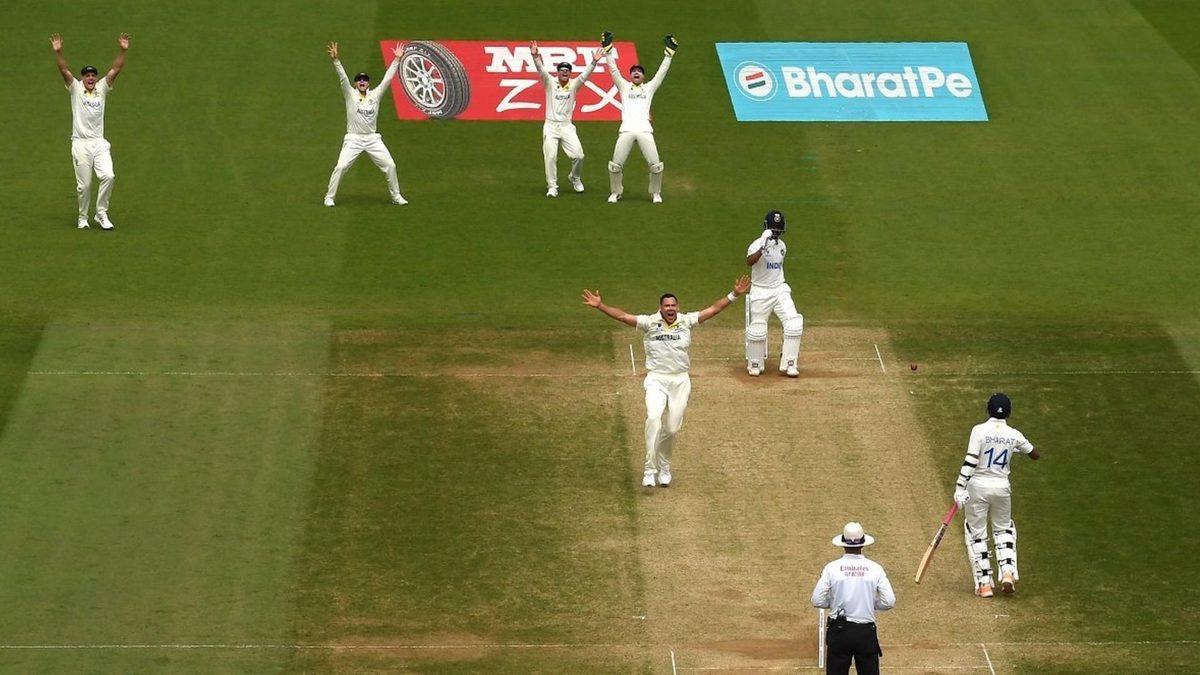
If time had prevented Australia from beating India the World Test Championship 2021-23 final, there would have been – among other things – an ordinary over rate to blame.
It began on the first day at the Kia Oval, when India won the toss and went in with four fast bowlers, and did the four-fast-bowler thing by putting Australia in. Despite the extra half an hour and only three wickets falling, India bowled five overs fewer than the stipulated 90 – something that has become acceptable for pace-heavy attacks.
Barring an insubstantial monetary fine and a potential ban of little consequence to captain Rohit Sharma, India had little to lose. In fact, they were probably pleased to be able to come off the field as against a rampant Steve Smith and Travis Head, who had been on top since well before tea.
Australia reached 469, and were on top when they had India at 151-5 by stumps on day two. However, in the final session, Australia bowled 28 overs in two and a half hours – barely crossing 11 overs an hour – and another 22 in the first two hours of the third morning.
India, of course, had no problem with all this. They trailed by 173 in the first innings: only twice in their history had they overcome a bigger deficit to win a Test match. While both were against Australia (Melbourne 1980/81, Kolkata 2000/01), they had bowled last on both occasions.
Australia returned to the field more than a day later (India had bowled only 84.3 overs). This time they hastened things up in the extended final session. The over rate of 13 overs, while better than the 11 they managed in the same session two days ago, was still below ICC’s stipulated 14 – though there are allowances for wickets and reviews built into the playing conditions.
Over the course of the first four days, the two teams had bowled approximately 30 overs fewer than the stipulated 360 overs four days that should be sent down during four overs of cricket.
In other words, despite the sunshine, the paying viewers were denied a full session’s cricket.
However, there was something at stake other than simply giving the paying audience the 90 overs of cricket. There was a Test match – a World Test Championship final, no less – to be won.
To win a Test match, you need to take 20 wickets. The more balls you bowl, the higher your chances of getting the 20 wickets. The quicker you go through the overs, the more balls you bowl.
The onus to speed up the over rate is, thus, more on the team that is in a greater position to win. India would have been happy to slow the game down. Their (and in the first innings, Australia’s) over rates prevented Australia from setting a target close to, or even in excess of, 500.
Australia have paid for poor over rates before. In the previous WTC cycle, in 2019-21, they were docked four points for their ordinary over rate against India in the Melbourne Test match of 2020/21. They finished on 332 points as a result, and a points percentage of 69.2.
Had they not been docked the four points, they would have finished on 336 – the same 70 percent as New Zealand (420), and would have qualified for their superior runs per wicket value (1.392 to 1.281).
It may be argued that 444 was nearly twice of what India eventually managed to score. However, on another day against a different line-up in another venue, Australia may have run out of time while pressing for a win.
Given the ICC’s focus on wins (12 for a win, four for a draw), over rate is something Australia – and other teams – will need to keep an eye on. And, of course, there are those penalty points to worry about.








